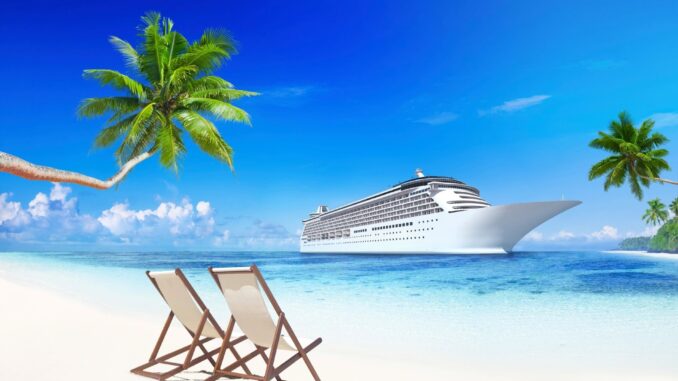
The end of October brought good news to the cruise industry as the Centers for Disease Control and Prevention (CDC) lifted the No Sail Order for cruise ships sailing to and from American ports. In its place is the Framework for Conditional Sailing Order, where cruise ships may resume phased-in operations by following strict measures set forth by the CDC:
“During the initial phases, cruise ship operators must demonstrate adherence to testing, quarantine and isolation, and social distancing requirements to protect crew members while they build the laboratory capacity needed to test crew and future passengers. Subsequent phases will include simulated (mock) voyages with volunteers playing the role of passengers to test cruise ship operators’ ability to mitigate COVID-19 risk, certification for ships that meet specific requirements, and return to passenger voyages in a manner that mitigates COVID-19 risk among passengers, crew members, and communities.” 1
Steps toward a healthy sailing
Since the suspension of cruising in March, cruise lines have been working tirelessly with the CDC, local governments, and destination partners to develop the health and safety protocols required for the eventual return to sea. At the panel discussions held at Seatrade Cruise Virtual, there was unanimous consensus that the resumption of cruising carries an obligation to protect not only the guest, crew, and destination communities, but also the entire cruise industry.
To that end, two of cruising’s strongest players - The Royal Caribbean Group and Norwegian Cruise Line Holdings Ltd. - joined forces to create The Healthy Sail Panel. Co-chaired by Governor Mike Leavitt, former Secretary of the U.S. Department of Health and Human Services, and Dr. Scott Gottlieb, former Commissioner of the U.S. Food and Drug Administration, the 11-member team included cruise line executives, leading public health experts, biosecurity officers, medical doctors, and university professors specializing in infectious diseases.
In September after four months of collaborating efforts, research, and meetings, The Healthy Sail Panel presented 74 recommendations2 to the CDC, encompassing a four-pillar strategy: PREVENT. DETECT. MANAGE. PROTECT.
Prevent.
The first priority is to mitigate the chance of bringing COVID-19 onboard ships. This is a multi-layered approach that includes proof of negative COVID-19 test results from all guests upon arrival at the cruise terminal, and additional in-terminal screening including temperature checks and re-testing of all guests [with immediate results] before embarkation.
All crew members, upon receiving a negative test result on arrival, must also remain in quarantine for 14 days and must receive a second negative test result before being declared fit for duty.
In short, cruising will be the only environment in the world where 100-percent testing is performed on every single individual before anyone is allowed to embark a ship.
Detect.
Sailing under reduced capacity as well as mask-wearing, increased sanitation, hand-hygiene, and social distancing practices will further reduce the risk of infections while at sea.
Continuous screening and monitoring of all guests and crew will be conducted throughout the voyage, which will aid in detecting infections. The ships’ existing medical facilities will be further augmented with laboratory and testing facilities as well as additional medical doctors, nurses, and technicians to carry out necessary procedures.
Manage.
The Healthy Sail Panel agrees that despite best practices, the risk of COVID-19 - which exists in all modes of vacation travel - simply cannot be eliminated. Therefore, just as important as testing and prevention, extensive recommendations have been put forth to manage the spread of COVID-19 should it appear onboard.
This includes multi-scenario contingency plans on how to handle infections from a singular event or multiple cases to an outbreak requiring full-ship disembarkation. Thoroughly mapped-out contact tracing, quarantine and isolation procedures will be applied to treat infections and to stop further transmission. In addition, all interior ventilation will be improved through enhanced filtration and fresh-air exchange systems, ensuring that no exhausted air is being recycled.
Protect.
Elaborate protective measures will be in place to isolate positive cases and quarantine at-risk individuals with dedicated staterooms while keeping healthy guests safe.
Ships will be equipped with the proper medical equipment, expertise, and training for the crew to treat guests who contract COVID-19 while onboard until they can be safely transferred to shoreside medical facilities. Cruise lines and port cities will establish and agree upon an action plan to accept and handle the safe disembarkation of all guests.
Furthermore, protection will also extend to the ports of call on the ship’s itinerary. Guests will only be allowed to disembark while participating in cruise line orchestrated excursions and must remain with the group for the entire duration. Similar protocols are being planned for crew shore visits.
Although this is just a précis of the full report, the ultimate mission of the Healthy Sail Panel was to create a comprehensive toolbox of preventative, management, and protective measures that will allow ships to safely resume cruising. These proposed recommendations certainly contributed to the lifting of the No Sail Order and the creation of the Framework for Conditional Sailing Order. With this positive outcome, the cruise industry can now look forward to and embark on the road to recovery.
In my next post we will examine what cruising looks like now and what it will look like for the rest of the world in the forthcoming year.
1 Framework for Conditional Sailing Order - CDC, October 30, 2020
2 Recommendations from the Healthy Sail Panel, September 21, 2020
